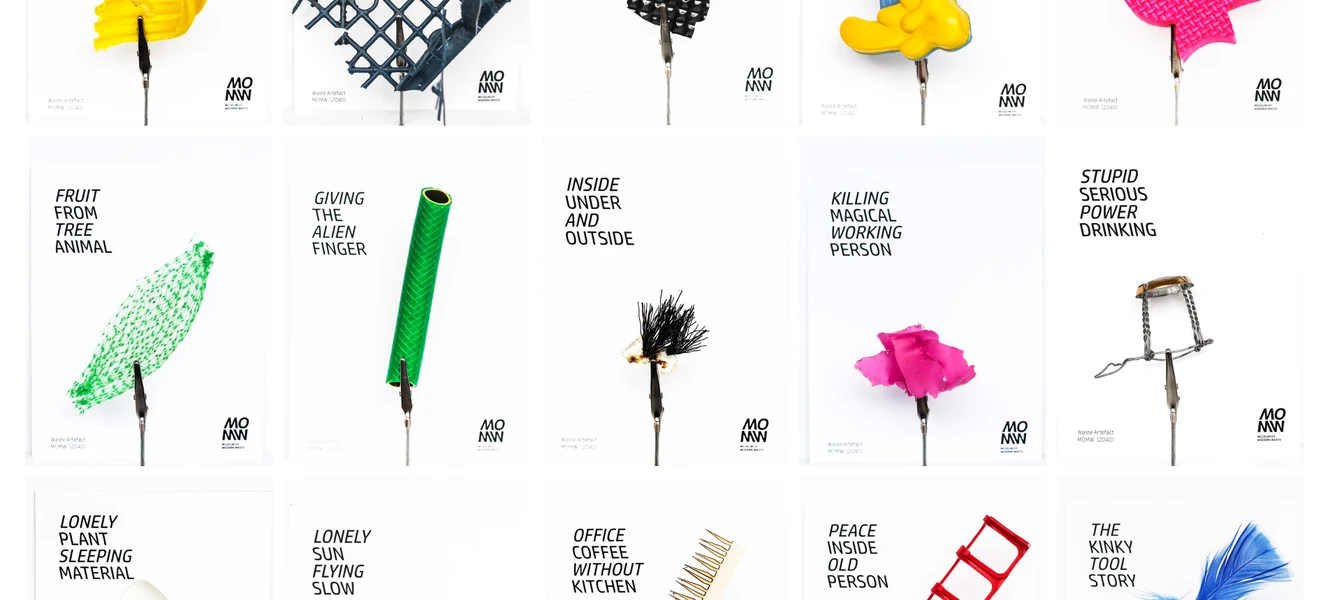
Touched by Waste
Imagine the year 2040. In the not too distant future – a future where the reuse of the earth's resources has become so refined that waste is now a rarity, not a symbol of the discards of the consumer society. All resources are highly valued. The drifting plastic islands have been removed from the oceans and put into use; the gigantic heaps of used textiles from the past have been recycled. Rubbish bins and refuse containers have been reduced to empty symbols of a past filled with waste and abundance.
By 2040 rubbish has become so valuable and rare that a museum has started collecting and exhibiting the most interesting, stunning objects, those most worthy of preservation as artefacts. The name of this museum is Museum of Modern Waste.
The beauty in the rubbish
Twenty years ahead of time, Kolding School of Design is opening its doors to the design project Museum of Modern Waste. During Milan Design Week 2020, Kolding School of Design will present MOMW – a museum where waste is considered in line with collections of rare butterflies and contemporary art, as something valuable which we elevate and exhibit and which, displayed in a different context, can open the viewers' eyes to the beauty of what we in 2020 discard as useless.
“Opening up to curiosity is an important driver of action. I believe that sensing and discovering the aesthetic dimensions in waste can contribute to sustainable change for the individual and for the world,” says concept developer Maria Viftrup, who in collaboration with 10 students from Kolding School of Design has created the Museum of Modern Waste.
The journey of the purple feather
A bit of garden hose, the metal wire from a champagne cork, perhaps a worn-out scrubbing sponge or something entirely different will circulate on a conveyor belt during the museum’s opening hours, until a visitor perhaps recognises the distinctive beauty of a certain piece of rubbish that will secure it a place in the museum's unique collection. Touching and being touched by the beauty of a purple feather, imagining what journey it has made and whom it has met along the way can change our perception of everything that we discard on a daily basis. And we are not talking about small amounts. In fact, according to The World, more than 2 billion tonnes of waste are discarded globally every day – a number that keeps rising and rising.
Insight reinforces sustainability
"So why don’t we start appreciating waste already now," asks Maria Viftrup. “Every piece of rubbish holds a story of how resources manufactured in a complex process turn into a product that very often far too quickly has served its purpose and is being discarded. But there are beautiful and exciting stories hidden in the little broken plastic gismo, which, if we look at it and appreciate it, can inspire us to create more sustainable consumption and production. These are the stories that visitors to MOMW are going to help us tell", she concludes.
You can experience MoMW at BASE Milano during Milan Design Week 21 – 26 April 2020. Opening hours: All days 10.00 - 20.00 except Sunday, when we are open from 10.00 - 18.00. Address: Ventura Future, Via Tortona 54, Milano
Concept development: Maria Viftrup
Students: Aida Montes Rodriguez, Anne Malmmose Bak Sørensen, Ashna Patel, Georgina Louise Norris, Karen Juhl Petersen, Marianne Noer, Runa Eggers Rossau and Sophie Kirkegaard Jensen
Visual identity: Louis Hørsted Kocmick and Pernille Karlsen
Project Manager: Charlotte Melin
Exhibition construction and design: Allan Schmidt
Photographer: Katrine Worsøe
Video: Jens Bo Thomsen
Thank you: Kolding Municipality and the Aage and Johanne Louis-Hansen Foundation.
“”At åbne for nysgerrighed er en vigtig drivkraft for handling. Jeg tror på, at det at sanse og opdage de æstetiske dimensioner i affald kan være med til at skabe bæredygtige forandringer for den enkelte og for verden””


